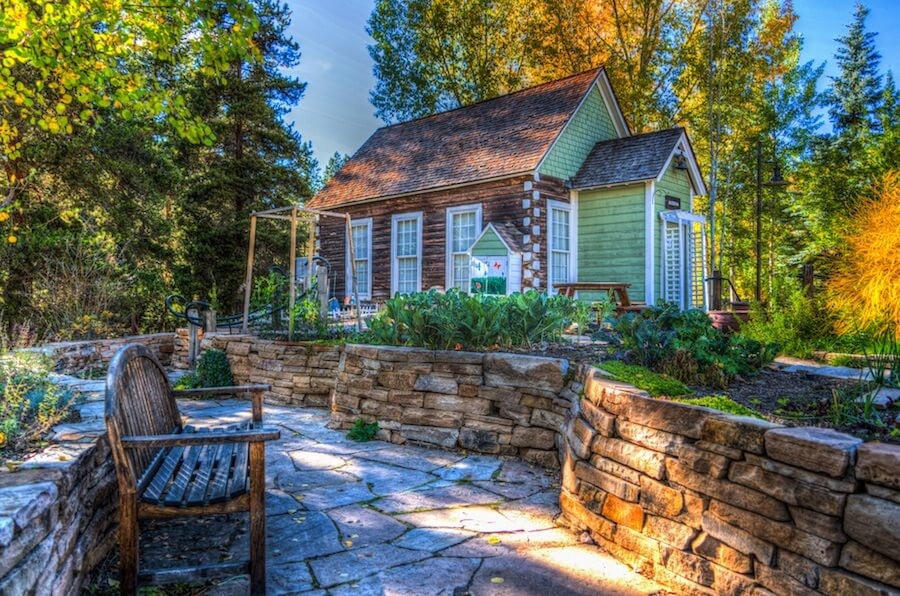Chink in Half the Time (Without Losing Quality)

Almost every log home is built with chinking. Even “chinkless” log homes (such as “Scandinavian Chinkless” homes) usually have some form of chinking.
Unless you own a rare traditional chinkless notchwork cabin, your log home requires chinking maintenance as time and wear take a toll.
Chinking your cabin should be a one-time job. Money, time and hard work can easily be lost without proper preparation, application, and cleanup after chinking.
Below we’ve compiled expert tricks to make your next chinking quicker and easier than ever, without sacrificing quality.
Preparation
Strategic preparation for chinking your log cabin will save you time, energy and money.
Make sure you have all the supplies and equipment you need in advance to prep your log cabin for chinking.
Create a detailed schedule that considers the shipping of materials, custom color matches and seasonal weather conditions.
Check the Weather
The most effective chinking happens when temperatures are dry and between 45° and 75° F. Avoid chinking in direct sunlight, and don’t apply chinking if rain or freezing temperatures are predicted.
If rain or snow falls after chinking, protect the chinking with a heavy sheet of plastic or canvas so you don’t lose your work. Don’t let the covering contact chinked surfaces.
If you’re in a time crunch to chink but are expecting cold weather, contact us so we can discuss your options. It’s possible to chink in subfreezing temperatures, but you’ll need special warming equipment.
Clean Your Logs
Don’t chink until the logs of your cabin are free of finishes, mildewcides/preservatives, cleaners, wood restorers, finishes, fungus, mildew, loose bark and sawdust. Remove fungus or mildew with any commercial, non-acid cleaner. A cleaner should help remove most soiling, though some areas may need to be lightly sanded.
Shop log home restoration products to clean your logs >
Be sure to allow adequate drying time and follow the next steps for checking the wood before chinking.
For tips on cleaning your logs:
Test Your Wood
Check the moisture content and pH balance of your cabin’s logs before chinking to optimize chinking effectiveness. Use Litmus paper to make sure the logs have a pH neutral surface — the range should be slightly acidic to neutral, and in the natural pH range of the wood species.
To check the wood’s moisture content, use a lignometer to check at a depth of one inch below the surface of the logs. 18% or less moisture content is recommended before chinking. Take a reading at several different locations around the home.
Apply Stain or Finish
Check out our recommendations for finishing products or stain so you don’t wind up with a product that’s incompatible with your wood, wasting time and money.
Choose the Right-Sized Backer-Rods and Bond Breaking
Choosing the right size of backer-rod is the spine of effective chinking. Determine the correct backer-rod size by laying different sizes into the joint of the log. Choose the size that fits firmly and keeps the flat surfaces snugly against the logs.
Spray the two upward-exposed surfaces of the backer-rod with a high tack spray adhesive. Don’t apply the adhesive to the logs directly — this will have an ineffective and unsightly result.
Let the adhesive dry until tacky, then insert the backer-rod into the log joint and press firmly until it fits snugly between the logs. Continue this process until the backer-rod is installed in all the log joints.
Chinking Application
Determine the proper-sized nozzle for the width of the chink line to ensure a smooth, steady application of backing material on the first try.
Apply the material in one continuous line down each log joint from end to end, without letting the material build up in thickness. Stopping in the middle of the line requires more effort to trowel.
If you’ve never chinked before, practice in a location of the home where the chinking won’t show, like inside a closet or behind cabinets. Be sure not to cover too much area at one time in order to allow the backing material to “skin” over before troweling.
Troweling
Before troweling, lightly mist the bottom of the trowel with the release agent. The release agent will allow the trowel to glide smoothly over the chinking without sticking and pulling. Be sure to not use too much, as it can cause the material to run or prevent the chinking from properly sealing.
Trowel the material neatly into the joint and along the edges, using a trowel stroke of six to twelve inches. Be sure to force out any air blisters and smooth them back over.
A properly applied application will result in chinking that is tightly bonded with the wood at the edges of the joint.




